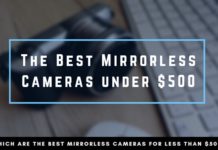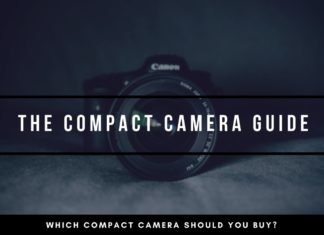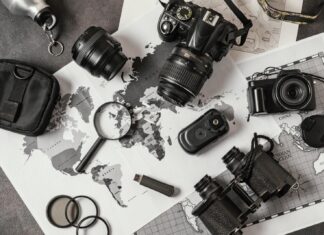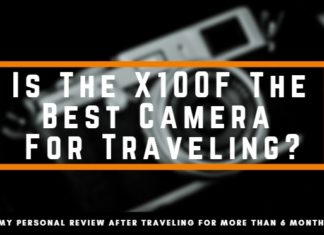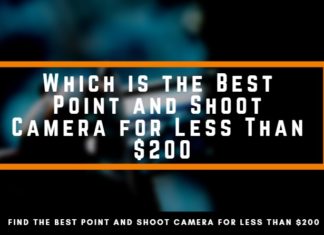I remember that even a few years ago, mirrorless cameras were very frowned upon. There were a lot of naysayers that argued that mirrorless cameras will never be useful for Street Photography.
How is the state of Mirrorless Cameras in 2019?
What are the benefits of the new kind of cameras and are DSLRs still the way to go?
Best Mirrorless Cameras in 2019
FujiX100F | Amazon Link
The Fujifilm X100F signifies the achievement of new heights in Fujifilm’s endless pursuit of perfection in photography. Perfection means creating a system that allows photographers to control, frame, and create with style, ease, and purpose. A long-anticipated iteration of the X100 series, the Fujifilm X100F is a powerful addition to Fujifilm X Series, offering photographers the versatility of endless creativity.
License
Features
Features
Templates
PRO
Excellent Image Quality
Great Design
Relatively Compact
CONTRA
No Tiltable Screen
Sony Alpha A7R III | Amazon Link
Thanks to an evolutionary leap in image processing power and efficiency, the a7R III combines a high-resolution 42.4 MP back-illuminated Exmor R CMOS image sensor with impressive shooting speeds at up to 10 fps1 with full AF/AE tracking, as well as beautiful 4K2 HDR3 video quality, wide 15-stop4 dynamic range and high sensitivity with noise reduction of almost a full stop4 (shown here with the Sony FE 24-70mm f/2.8 GM Lens).
License
Features
Features
Features
PRO
42 Megapixels
Best Image Quality
Full-Frame Sensor
CONTRA
Low Battery Life
Olympus Pen-F | Amazon Link
Rangefinder cameras were all the rage in 1963. Now they’re back. The beautifully-crafted PEN-F features all-metal construction with luxurious metal and leather-grained accents. Each of the camera’s functions are easy to reach and can be fully customized. You’ll find an exposure compensation dial on top, two customizable dials to assign functions and four custom modes, all operable with your right hand without taking your eye from the viewfinder. Shoot the way you want.
License
Features
Features
Features
PRO
Very Sharp
Tiltable Screen
Touchscreen and Wifi
CONTRA
No Ultra HD Video
RicohGR | Amazon Link
Building upon an award-winning series, the RICOH GR II categorically redesigns the digital compact camera with its newly developed wide-angle lens and 16-megapixel APS-C size image sensor, all built into one of the smallest bodies in its class. Not only does the GR feature a larger sensor, its anti-aliasing filter-less design, and fast 28mm equivalent F2.8 lens make for incredible, high-sensitivity, professional-grade imagery. In addition to high-speed autofocus improvements and onboard Wi-Fi compatibility, enjoy DSLR-like handling and functionality with full 1080 HD video capture capabilities. Whether you’re looking for a second body to count on as a trusty sidekick, or simply want big pictures from a small camera, the GR II will redefine your photography.
License
Features
Features
Templates
PRO
Excellent Image Quality
APS-C Sensor
Very Compact
CONTRA
No Viewfinder
FujiFilm X-T2 | Amazon Link
In its compact, lightweight and robust body, the Fujifilm X-T2 delivers everything you need. A large, high definition EVF, easy to use dials, high-speed AF, compatibility with an extensive range of high-performance interchangeable lenses, Film Simulation modes that inherit the legacy of Fujifilm colors, unparalleled image quality and outstanding 4K movie recording, made possible by the latest sensor and processing engine, It is the X series perfected.
License
Features
Features
Templates
PRO
Excellent Image Quality
Fast Auto-Focus
Smart Battery Grip
CONTRA
Very Basic Video Functions
Image Quality of Mirrorless Cameras
Sensor Size
Obviously, the RAW Image Quality is a big influence on the buying decision of a camera. Years ago, mirrorless cameras relied on smaller sensors like APS-C or even the new micro four-thirds size. Nowadays, full-frame mirrorless cameras are becoming a real option.
Whereas higher-end DSLRs featured full-framed sensors, this was often taken as an argument, that DSLRs provide a better Image Quality than any mirrorless camera.
Today the situation is a bit different.
Sensor size has only a small influence on image quality and for the most part of Street Photography, it is irrelevant. The most differences between sensor sizes You will find during Night Photography. Other than that, the sensor size is neglectable for the Raw Image.
Megapixels of Mirrorless Cameras
More important can the amount of pixel be.
New generation Mirrorless cameras mostly feature a 24.3 Megapixels sensor.
When it comes down to Megapixels, it seems that we have hit a threshold in the general photography field. Even professional cameras like the Canon 5D IV “only” have 30 Megapixels.
Even a small compact camera like the RicohGR provides over 16 Megapixels, which is more than enough to print Your photographs in gallery quality.
In fact, for my first exhibition print, I used the RicohGR and the quality was more than sufficient.
I would say, for the average user, it doesn’t make a huge difference if You have 16 or 24 Megapixels. The only advantage is, that 24 Megapixel allow You more freedom to crop.
Other than that, mirrorless cameras don’t face any disadvantage in sensor quality compared to DSLRs.
Differences between DSLRs & Mirrorless Cameras
To come to a conclusion, there isn’t a clear “winner” in the image quality department.
DSLRs aren’t inherently better when it comes to the sharpness of photographs or the level of detail. Rather than comparing the systems, it comes down to the individual camera.
Furthermore, the variety of mirrorless cameras is steadily increasing. There are now full-frame mirrorless cameras like the Sony a7R III (Amazon|Review) that offer a professional quality even for fashion or landscape photographers where quality has a bigger impact.
The technology is improving and it seems that the pace for Mirrorless Cameras is even faster.

Compactness
One big factor in Street Photography is the size of Your camera.
When I think about annoying photographers, I imagine a paparazzi with a big size camera, that features an even larger telelens. Paparazzi don’t have have the best reputation and therefore I want to distance myself as much as possible from them.
DSLRs are usually bigger and more noticeable. To the unknown eye, they also seem more “professional” just by the look of it. This can be very intimidating for a lot of people when they see someone with such a camera wandering through the street and seemingly taking random pictures.
Mirrorless cameras are usually smaller. The RicohGR can fit in Your palm, Micro Four Thirds cameras are roughly the same size and even other cameras like the FujiX100F aren’t bigger than older analog cameras.
Due to its smaller size, they appear to be less intimidating and are met with a friendlier mood. This can also have a positive impact on reducing Your own fear in Street Photography and getting closer to people.
Apart from the psychological aspect, the smaller size makes it easier to take the camera with me. For example, the RicohGR fits in jacket pockets and other mirrorless cameras only require a small camera bag.
Another point to consider is, that non-changeable mirrorless cameras are also often allowed to be taken inside even venues, whereas DSLRs are often prohibited. If You are visiting concerts or sports events and want to take pictures, then mirrorless cameras definitely have an edge.
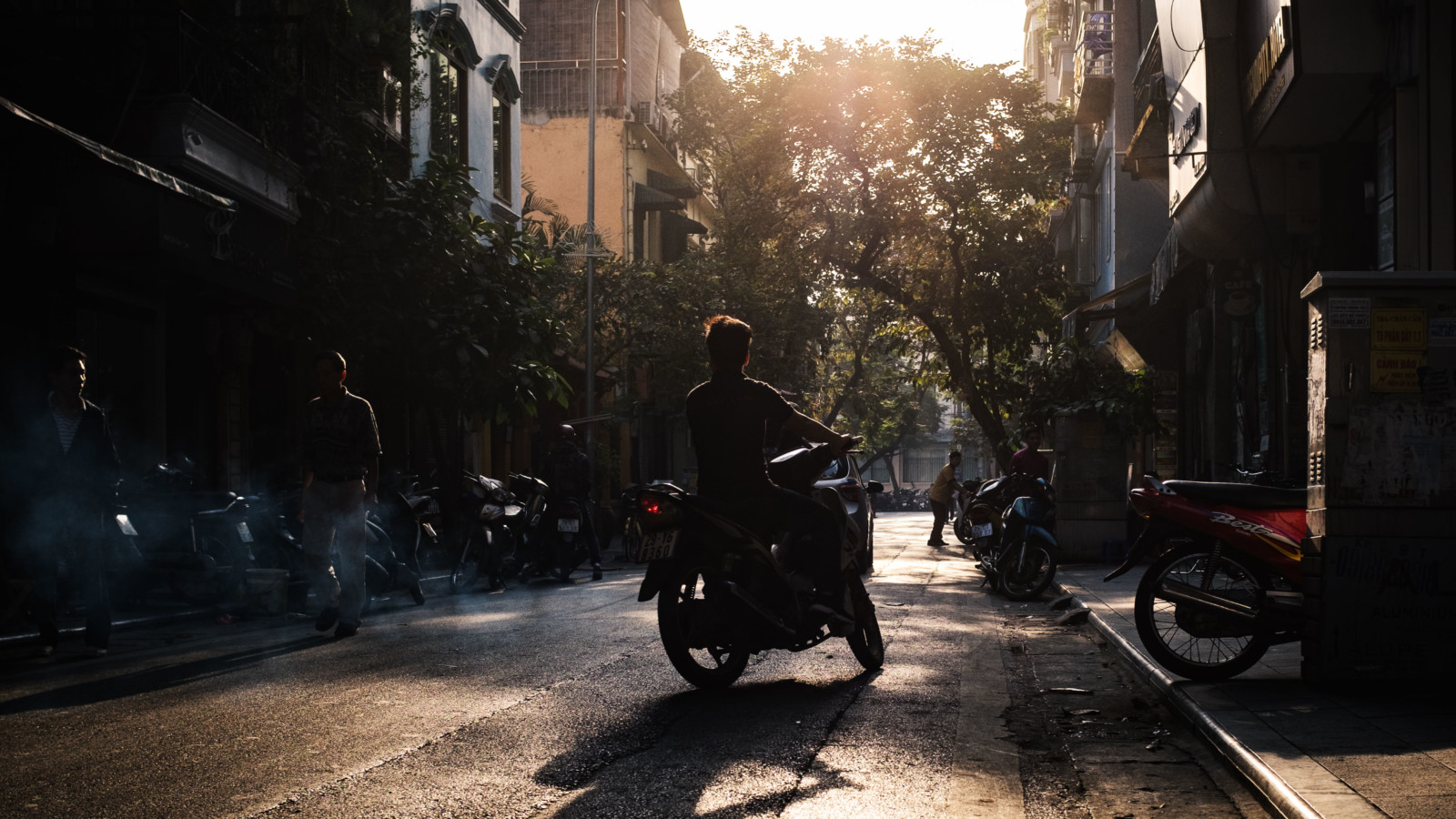
The Weight of Mirrorless Cameras
Size and weight are strongly tied and an important aspect of Street Photography.
Although a few hundred grams difference in weight don’t seem like much when You compare them. Wandering through the city for hours, You will notice the difference and be happy about every gram that You can save. Your neck and posture will thank You for that.
To give some overview of the weight difference, here is a comparison chart of weight classes between mirrorless cameras and DSLRs in context to their sensor size.
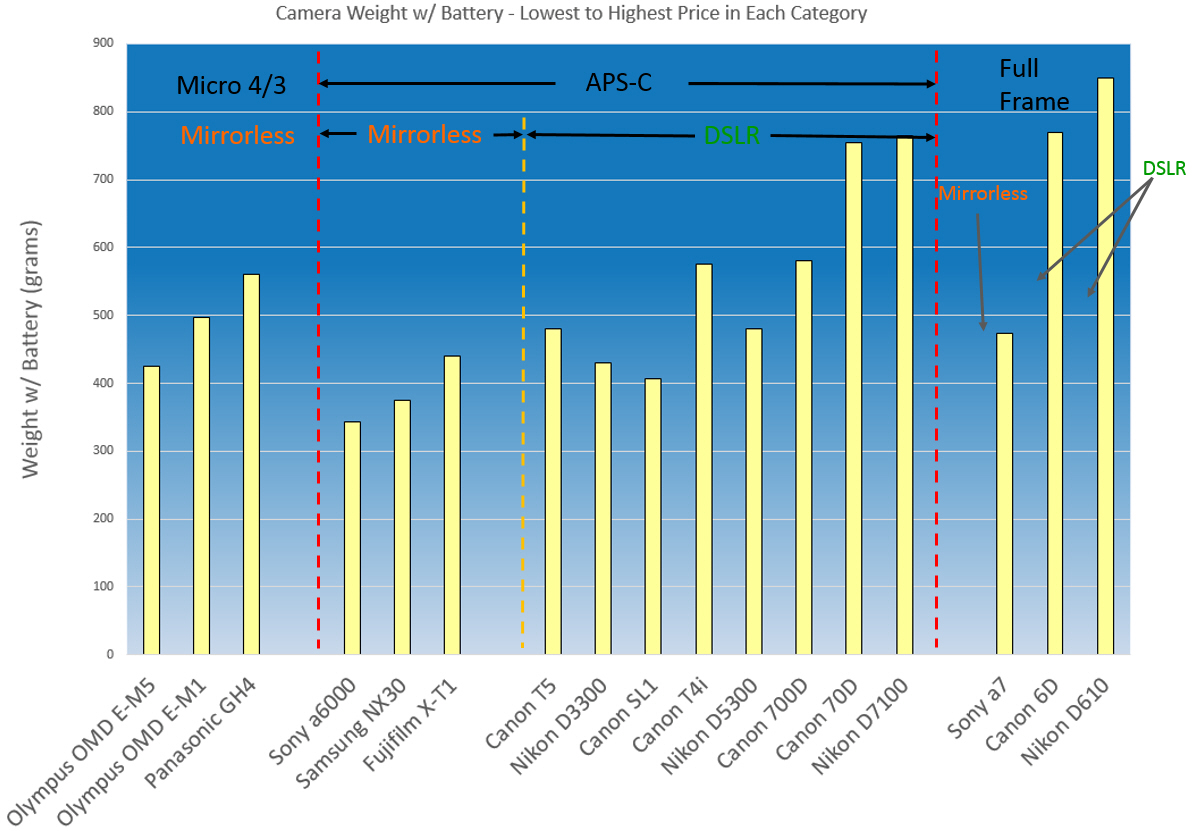
As You can see, even with the same “architecture” of the camera, the variants without the mirror are noticeably lighter than their counterpart.
The disparity becomes even larger if You go for fixed lens cameras and are confident in choosing one focal length.
Appearance
So now we have already found that Mirrorless cameras are a little bit smaller and weigh less than DSLRs. This is not the only specific characteristic when it comes to the design of Mirrorless cameras.
When I think about DSLRs, I automatically imagine clunky big boxes, that work well but don’t really wouldn’t win a Design Award. They are just build to function, without any focus on the appearance.
“Form follows function” and I agree that a camera should function well in the first place. Secondly, the camera should be easy to control.
In Street Photography, the design of a camera is not exclusively for aesthetic purposes. The camera is more than a simple tool, but directly influences how You are perceived on the street.
With a big DSLR, You not only draw a lot more attention, people become also more suspicious. They think with such a big camera You have to be a professional photographer who is out on the street to make money.
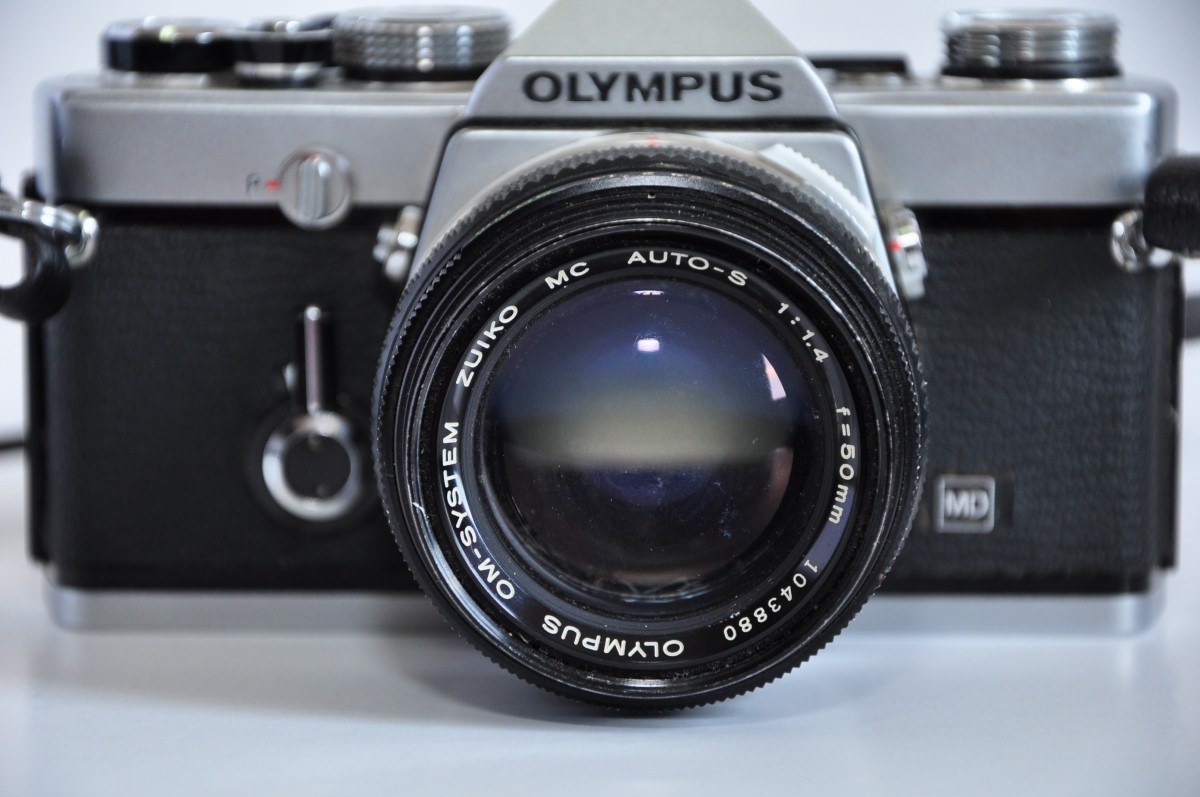
Mirrorless Cameras are often designed after old analog cameras, or at least their look tries to recreate those characteristics.
When I am out on the street with my FujiX100F, it is not easy to detect if I have a film or digital camera at first glance.
Hence the perception shifts and instead of being seen as a threat, because people think I am making money off of their pictures, the FujiX100F makes me appear to be a tourist or hobbyist.
Although personal taste always is a factor when it comes to product design, the appearance of mirrorless cameras is an advantage for Street Photographers. They appear to be less intimidating by being smaller and resembling old film cameras.
Electronic Viewfinder
I remember Years ago when mirrorless cameras had the first rise in popularity, the Electronic Viewfinder was very rejected by a lot of photographers. To be honest, I was one of them that preferred the optical viewfinder of DSLRs and I would have never thought that I could adapt to an Electronic Viewfinder.
In its beginning stage, Electronic Viewfinders were very laggy, the resolution was very low and they were very prone to errors.
Meanwhile, the technology progress in the electronics consumer field is rapid. TVs, computer monitors, as well as electronic viewfinders have seen a very steady progress in recent years.
The EVFs of the newest generation aren’t noticeable laggy anymore and faster processors ensure 120FPS even when the camera is moving very fast.
Moreover, they provide many advantages compared to traditional optical viewfinders.
You are able to see the exposure of the final image directly in the electronic. This way You get what You see and aren’t surprised by the result.
I like to underexpose my images usually by one or two stops to prevent clipping in the highlights, does that mean, that the EVF will be too dark now all the time?
In practically all modern mirrorless cameras You are able to adjust the brightness of both, the LCD screen and the EVF. So even if You are consciously underexposing, You can compensate by changing the brightness.
Apart from the exposure, the electronic viewfinder in mirrorless cameras can provide useful pieces of information that You can use as an overlay including
Grid (Think about the Rule of Thirds)
Histogram
Magnifying Glass for manual focus
Basic Information (Battery, memory capacity, aperture, Iso …)
If You are still not fond of Electronic Viewfinders, more and more mirrorless cameras also integrate an optical viewfinder.
Hybrid Viewfinders allow You to switch between EVF or OVF, regarding Your preferences.
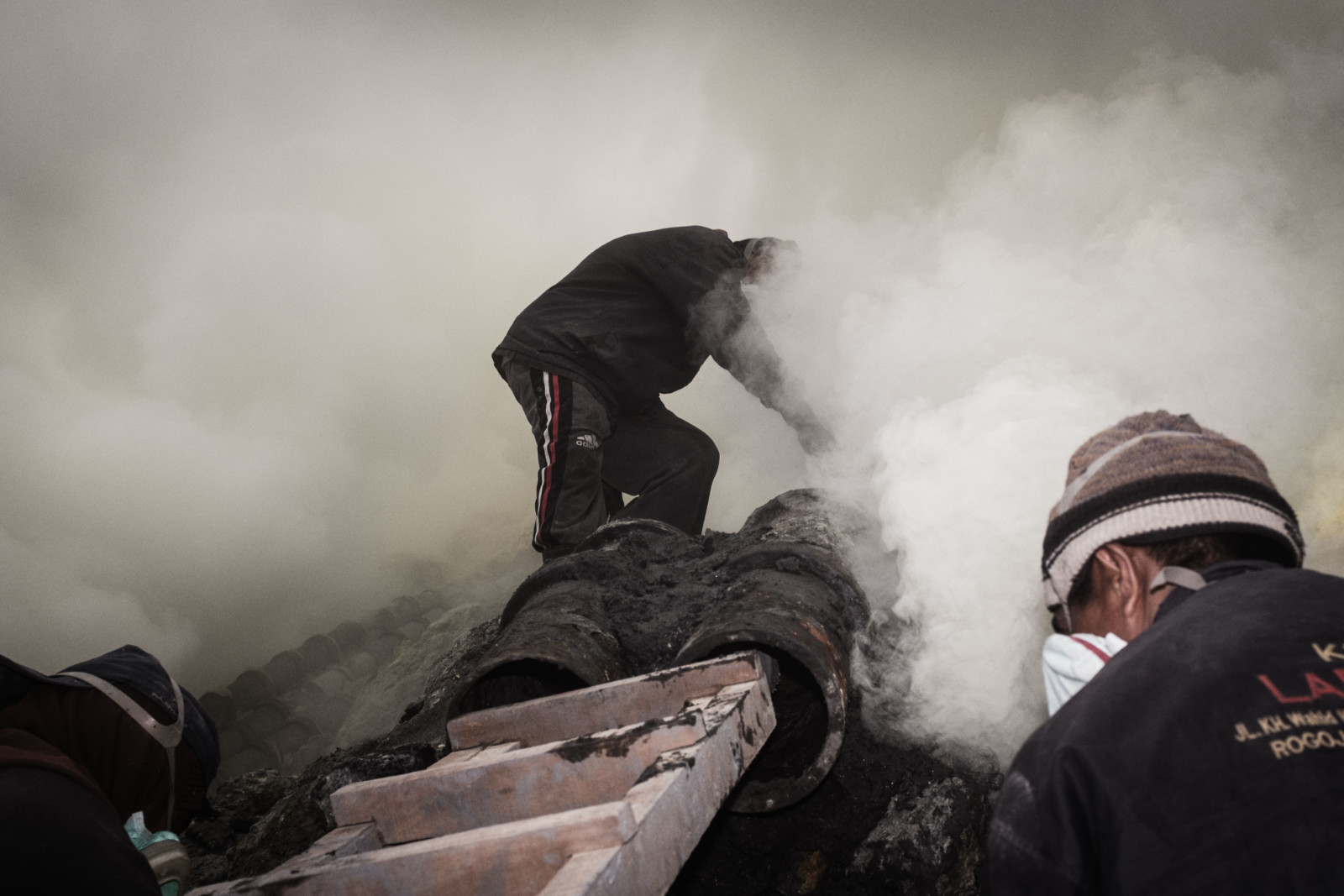
Continuous Shooting
In Street Photography the difference between being able to shoot 5 or 15 pictures per second might not be crucial.
If You are a professional photojournalist and work in environments with very fast moving objects, then losing a photograph because Your camera was too slow, can cost You a lot of money.
The sound of the shutter in burst mode has almost a zen effect because it is so fast.
At 14 frames per second, the Canon powerhouse 1-DX is the king of the burst of DSLRs.
But the king gets easily dethroned by even relatively “entry level” mirrorless cameras like the Lumix G9, which is able to shoot and save up to 20 pictures per second.
Of course, without the mechanical burden of the shutter, mirrorless cameras will always be ahead when it comes to the continuous shooting.
At 20 pictures per second, the memory is a real problem, which is why I don’t put much emphasis on this factor anyway in Street Photography.
But if You are a sports or nature photographer then having the comfort of shooting 20 frames per second is always better.
Mirrorless Cameras and their Autofocus
DSLRs used to have a clear advantage when it comes to the autofocus. They use a “phase detection” and deliver a tremendous quality.
Mirrorless cameras use the contrast autofocus.
Both have their advantages and disadvantages, but in the past, the DSLRs were ahead in every aspect.
With recent developments, the “phase detection” system is only advantageous when it comes to fast-moving objects that need to be tracked.
Other than that, the contrast autofocus is not only on par but depending on the field, ahead of the phase detection.
Especially when using the LCD screen and its auto-focus, DSLRs resort to inferior contrast based autofocuses.
Overall, I would say they are evenly good when it comes to Street Photography and it doesn’t really make a difference.
The Future of Street Photography?
A decade ago, mirrorless cameras might have been very exotic for Street Photography.
Small DSLR cameras were still on the reign and clearly better in every way.
Since then, a lot has changed and the technology has advanced in a way, that it is ahead of traditional DSLRs in a lot of aspects.
Nowadays, when I meet with other Street Photographers, I rarely see any DSLR anymore.
Now Fuji, Olympus or Sony are the choices of the camera manufacturer.
Mirrorless cameras are way better when it comes to Street Photography and their characters seem perfect for this genre.
They are small, so You can spontaneously take some pictures.
The design is very unobtrusive and seems more “friendly” to other people
With the support of the EVF, You are able to compose an image very quickly
I wouldn’t argue that mirrorless cameras are the future of Street Photography, but that they are already very established.
DSLRs are the exception and I see them most, when Photographers are more interested in other genres like portrait photography also.
When it comes to Street Photography, mirrorless cameras are clearly better as of today.
I believe that mirrorless will also advance at a faster pace than DSLRs and that Nikon & Canon adapted too slow to the current developments and are only slowly trying to catch up with new mirrorless models.
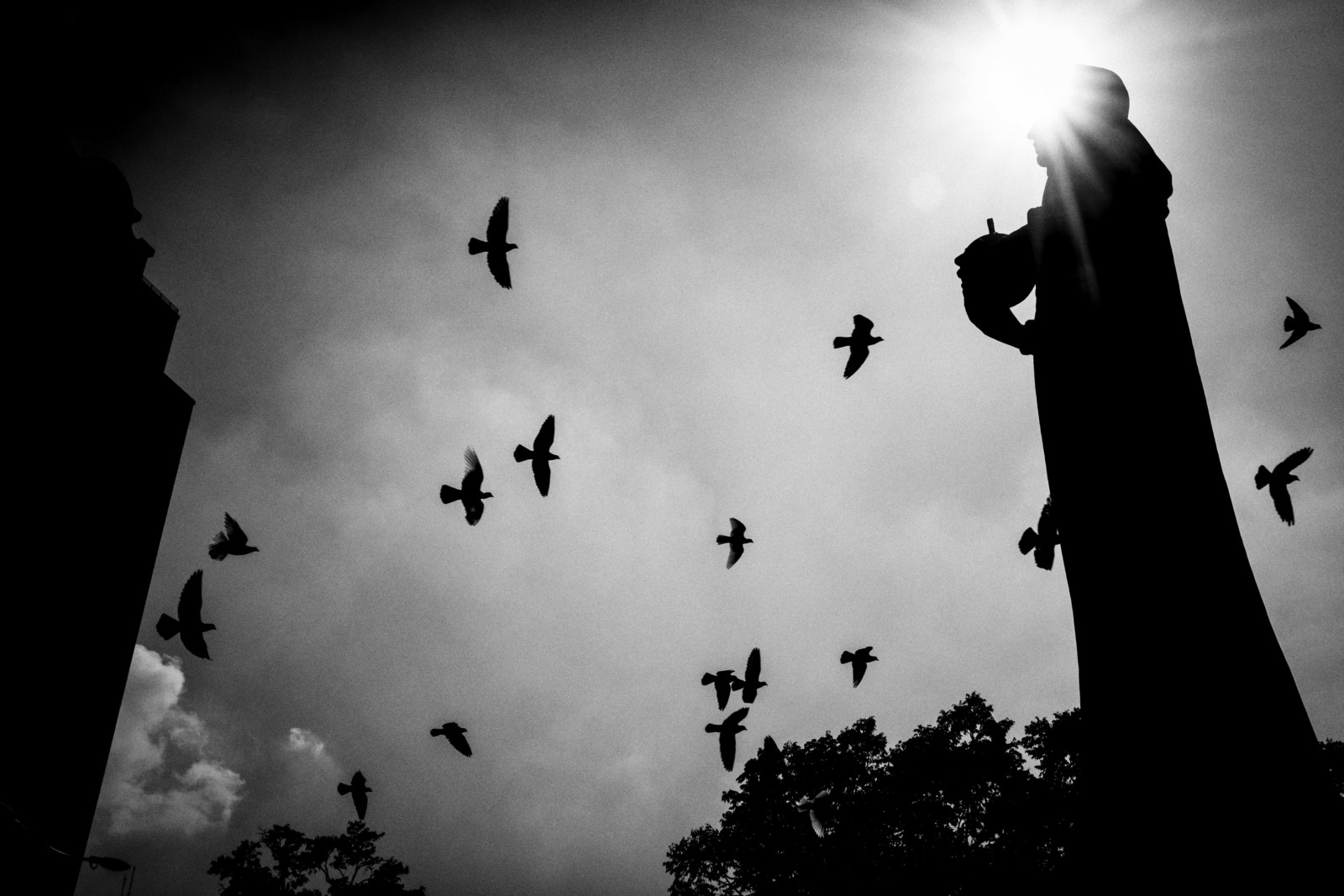
Mirrorless Cameras vs DSLRs
After analyzing some of the key differences of Mirrorless Cameras and DSLRs, what is the verdict? Is one system superior to the other or are there too many factors that come into play when choosing a new camera?
Image Quality is one of the most important deciding factors when it comes to the camera.
In the past, the new technology of mirrorless cameras was clearly lacking in that department and DSLRs had by far the better image quality.
Now, this isn’t true anymore as even mirrorless cameras with full-frame sensors are built and looking at the megapixels or general quality, there isn’t much of a difference.
Comparing the other properties:
Compactness
Weight
Appearance
Viewfinder
Shooting Speed
Focus Mode
The mirrorless camera is either ahead, or at least even with DSLRs and this is true for the status quo.
It is to believe, that camera manufacturers invest more heavily into mirrorless cameras as the small disadvantages of today will be eliminated, leaving the mirrorless cameras clearly in the lead.
As of today, DSLRs are only more useful in very niche-specific applications like sports and bird photography, where a fast & reliable auto-focus mode is absolutely necessary.
Aside from these very narrow fields, mirrorless cameras have more advantages and features that DSLRs are missing.



















